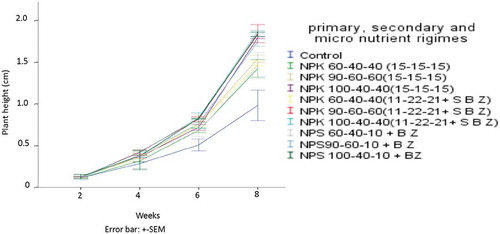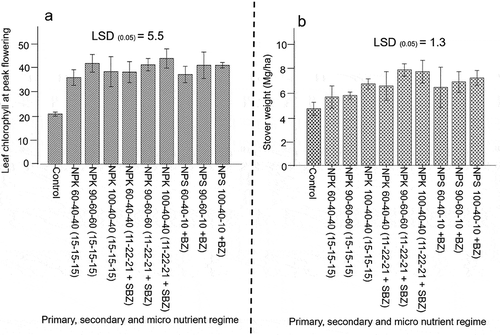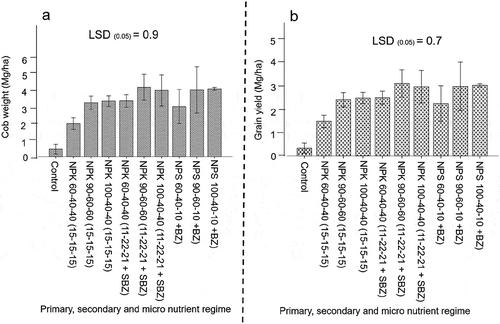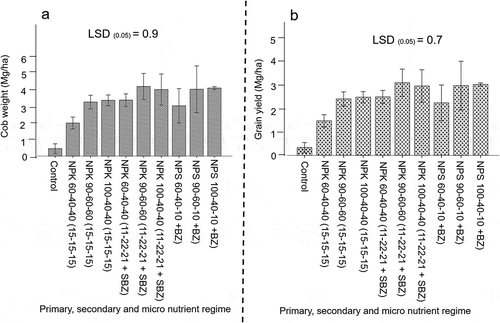Figures & data
Table 1. Physico-chemical characteristics of soils of the study area. Physico-chemical properties were determined based on the procedure used by Kugbe and Issahaku (Citation2015)
Table 2. Treatment combinations used to assess the relative impact of micronutrient inclusion in maize fertilization
Figure 1. Effect of primary, secondary and micronutrient formulation and rate on plant height of Wang Daata maize variety at two (2), four (4), six (6) and eight (8) weeks after planting (WAP).

Figure 2. Effect of primary, secondary and micronutrient formulation and rate on leaf chlorophyll at peak flowering (a) and total stover weight (b) of Wang Daata maize variety grown in northern Ghana. Bar represents ± 2 standard error of mean.

Figure 3. Effect of primary, secondary and micronutrient formulation and rate on cob weight (a) and grain yield (b) of Wang Daata maize variety grown in northern Ghana. Bar represents ± 2 standard error of mean.


